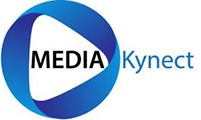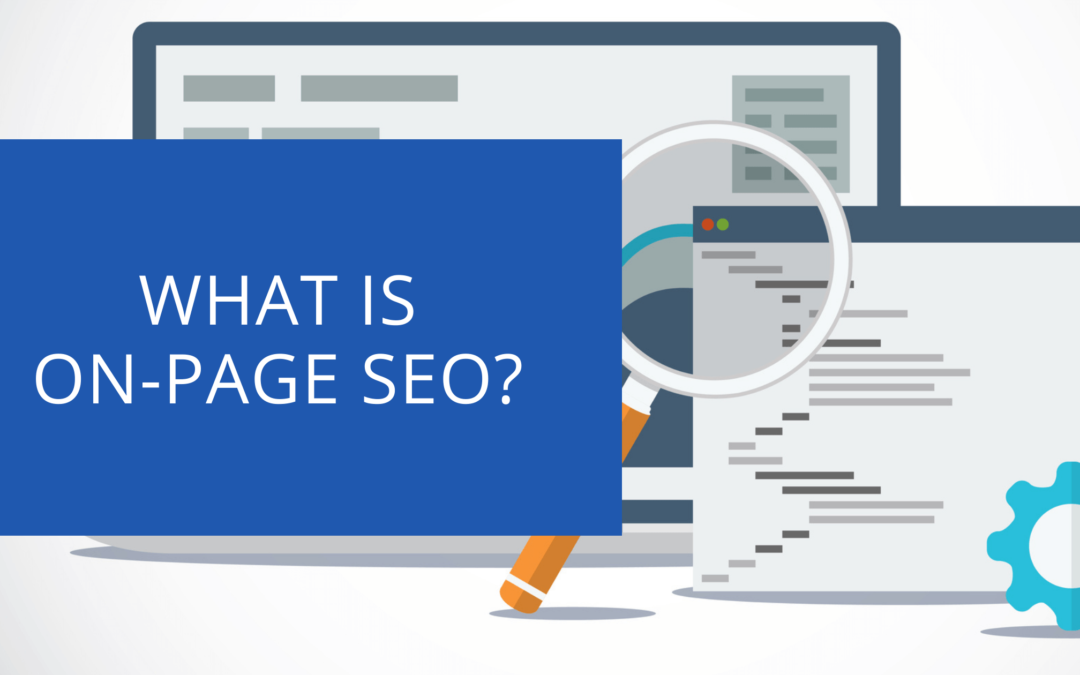On-page SEO is the practice of optimising your website’s content and structure to improve your ranking in search engine results pages (SERPs). It covers a wide range of techniques, from optimising your titles and meta descriptions to ensuring that your site is crawlable and indexable.
In this blog post, we will discuss on-page SEO in more detail and provide you with some tips on how to optimise your website for better visibility in SERPs.
Contents
What is On-page SEO?
On-page SEO is the practice of optimising individual web pages to rank higher and earn more relevant traffic in search engine results pages.
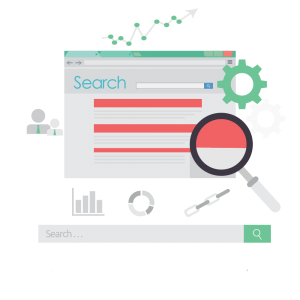 On-page SEO tactics include optimising the page title, meta description, header tags, images, and other elements that influence how a page appears in search engine results.
On-page SEO tactics include optimising the page title, meta description, header tags, images, and other elements that influence how a page appears in search engine results.
On-page SEO is one of the most important SEO tactics because it helps to ensure that your website pages are as relevant and effective as possible for search engine crawlers.
On-page optimisation can also help you to rank higher for specific keywords and phrases, which can result in more traffic and conversions from potential customers.
Why is On-page SEO important?
On-page SEO is important because it helps to improve your website’s visibility in search engine results pages.
When you optimise your website for on-page SEO, you are providing the search engines with the information they need to understand and rank your content. This can help to improve your site’s ranking for relevant keywords and phrases, resulting in more traffic and conversions from potential customers.
Onpage SEO factors
Keywords
Keywords are words and phrases that you include on your website to help you rank higher in search engine results pages (SERPs). They are the terms that people type into search engines to find your content, so it’s important to choose them carefully and use them strategically on your website.
Including the right keywords on your website can help you to attract more visitors from search engines, and it can also help you to rank higher for those keywords. This means that you’ll be more likely to appear at the top of SERPs for the terms that matter to your business.
Title Tag
The title tag is one of the most important on-page SEO factors. It’s the text that appears in the tab at the top of your web browser, and it’s also used as the title for your website in search engine results pages.
Your title tag should include your primary keyword or phrase, and it should be between 50 and 60 characters long.
Meta Description
The meta description is a short piece of text that appears under your website’s title in search engine results pages. It’s important to include your primary keyword or keyphrase in the meta description, and it should be between 150 and 160 characters long.
Headings and Subheadings
 Headings and subheadings are a great way to organise your content and make it easier for readers to understand. They also help to improve your website’s on-page SEO.
Headings and subheadings are a great way to organise your content and make it easier for readers to understand. They also help to improve your website’s on-page SEO.
When you use headings and subheadings, be sure to include your primary keyword or keyphrase in the heading text, as well as in the first paragraph of the corresponding content.
Content Formatting
When you format your content correctly, it can make it easier for search engines to understand and index. Make sure that your text is easy to read by using short paragraphs, subheadings, and clear formatting.
Some tips for using formatting to your advantage:
- Use headings and subheadings to organise your thoughts
- Include images, graphs, and charts whenever possible
- Make use of lists (like this one)
- Highlight quotes from other sources
- Use bold or italics sparingly to emphasise key points
Search Intent
Search intent also known as user intent is the reason why a user searches for something on the internet. There are three main types of search intent:
- Navigational: The user is looking for a specific website or brand
- Informational: The user is looking for information on a specific topic
- Commercial: The user is looking to buy a product or service
When you’re optimising your website for on-page SEO, it’s important to keep in mind the search intent of your target audience. What are they looking for? What questions are they trying to answer?
Once you understand the search intent of your target audience, you can better tailor your content to meet their needs.
Images
Whenever possible, include images on your website to break up the text and make it more visually appealing. Images also help to improve your website’s on-page SEO.
When adding images to your site, be sure to use keyword-rich alt text to describe the image. This will help search engines understand what the image is about, and it will also help to improve your website’s ranking for those keywords.
Synonyms and LSI keywords
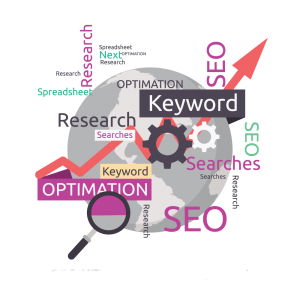 Synonyms and Latent Semantic Indexing (LSI) keywords are words and phrases that are related to your primary keyword or keyphrase. Including synonyms and LSI keywords on your website can help you to rank higher for those terms, as they indicate to search engines that your content is relevant to the topic at hand.
Synonyms and Latent Semantic Indexing (LSI) keywords are words and phrases that are related to your primary keyword or keyphrase. Including synonyms and LSI keywords on your website can help you to rank higher for those terms, as they indicate to search engines that your content is relevant to the topic at hand.
There are several ways to find synonyms and LSI keywords for your content:
- Use Google’s Keyword Planner
- Search Google for your keywords and see what synonyms are in bold text in the results
- Look up thesaurus websites online
- Check out related forums and discussion boards
- Google Trends can also be helpful for finding related keywords
Page Speeds
Page speed is another important on-page SEO factor. Your website’s page speed affects both your user experience and your search engine ranking.
There are several ways to improve your website’s page speed:
- Optimise images
- Minify JavaScript and CSS files
- Enable caching
- Use a content delivery network (CDN)
Schema Markup
Schema markup is a type of code that you can add to your website’s HTML to help search engines understand the content on your pages. Schema markup is used to mark up events, reviews, products, and other types of data.
When you use schema markup on your website, it can improve your site’s visibility in SERPS, and it can also help to increase your click-through rate (CTR).
Descriptive but short URLs
Your website’s URL structure is also an on-page SEO factor. When creating URLs for your web pages, be sure to use descriptive but short URLs.
Avoid using long, complicated URLs that are difficult to remember and navigate. Use keywords in your URLs whenever possible, and keep them as short as possible.
Internal Links
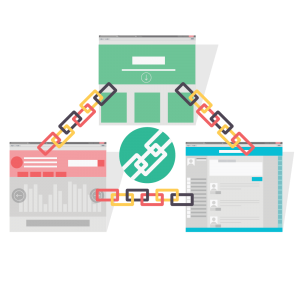 Internal links are links on your website that point to other pages on your site. They’re a great way to help visitors navigate your website, and they also help to improve your website’s on-page SEO.
Internal links are links on your website that point to other pages on your site. They’re a great way to help visitors navigate your website, and they also help to improve your website’s on-page SEO.
When creating internal links, be sure to use anchor text that includes your primary keyword or keyphrase.
Topical relevance
One of the most important on-page SEO factors is topical relevance. Your website’s content must be relevant to the keywords that you’re targeting. By covering topics in-depth and with multiple articles, you will be seen as a topical authority. You will also be using this content for internal links to spread signals throughout your website.
Mobile Friendliness
Now more than ever, it’s important to make sure your website is mobile friendly. Google use mobile-friendly factors as a ranking signal.
If your website isn’t mobile friendly, you’re at risk of losing traffic and rankings. There are several things you can do to make your website more mobile friendly: Use a responsive design
- Optimise images for smaller screens
- Use readable fonts
- Use responsive web design
On-page SEO FAQ
What is on-page SEO?
On-page SEO is the process of optimising your website’s content and structure for better search engine visibility.
What is included in On-page SEO?
On-page SEO includes optimising your website’s content, page speeds and implementing schema markup.
What are the benefits of on-page SEO?
On-page SEO can help you to improve your website’s visibility in search engine results pages (SERPS), increase your click-through rate (CTR), and improve your website’s overall user experience.
What is off-page SEO?
Off-page SEO is the process of optimising your website’s external factors for better search engine visibility which includes backlinks, social media, branding and business listings.
What is the difference between on-page and off-page SEO?
On-page SEO focuses on optimising your website’s content whereas off-page SEO focuses on optimising your website’s external factors such as backlinks, social media and branding.
Conclusion
On-page SEO is a vital part of any successful SEO strategy. By optimising your website’s content, you can improve your ranking on search engines, and you can also improve the user experience on your site. Keep these on-page SEO tips in mind when creating or updating your website’s content.
